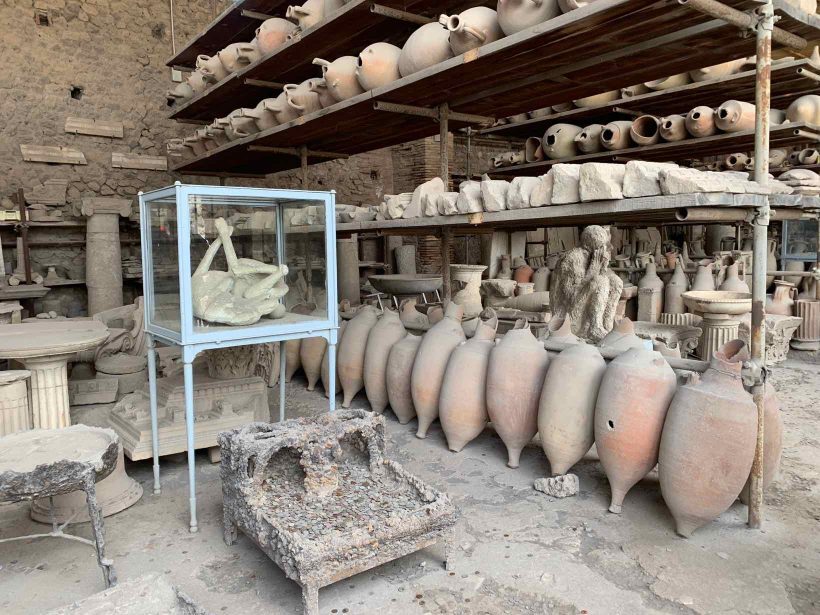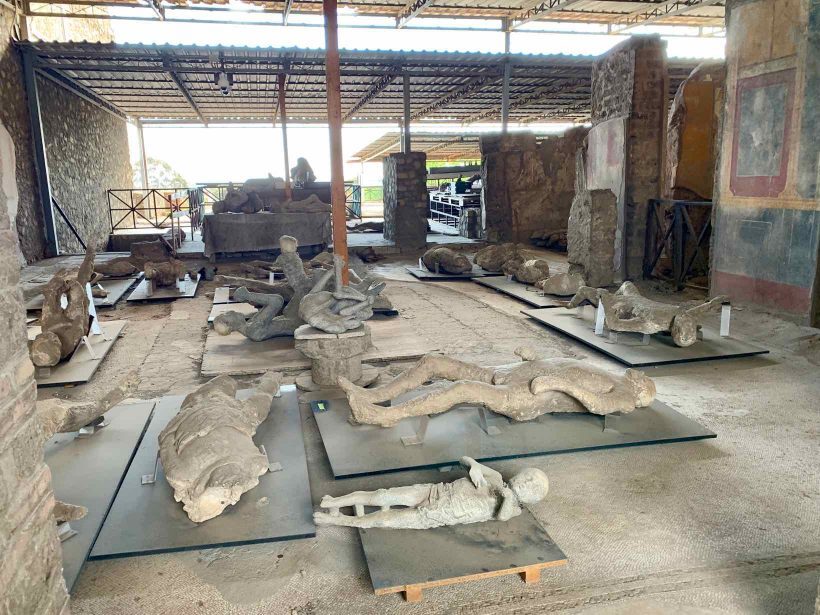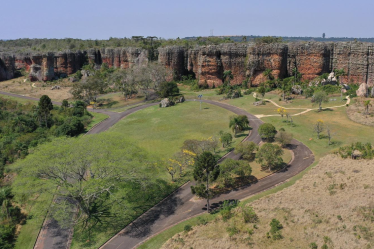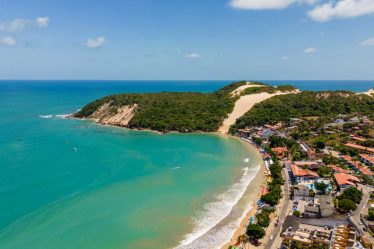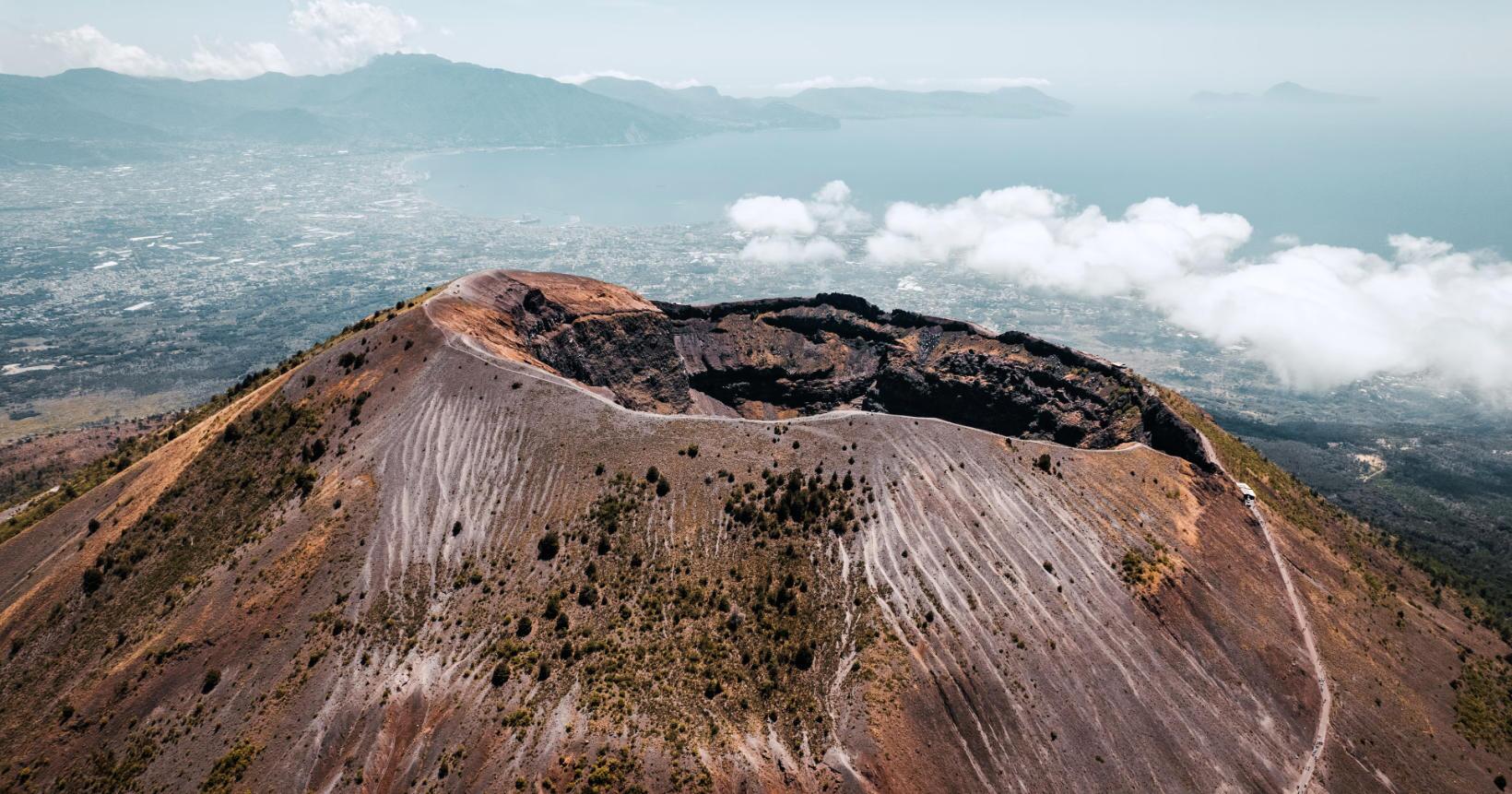
Vesuvius is one of the most famous volcanoes in the world, a giant that draws attention against the backdrop of the Gulf of Naples, in Italy. Although it is dormant, it is still an active volcano, with its last eruption in 1944. Since then, it has continued to be monitored 24 hours a day, a way to avoid tragedies like the one that destroyed the Roman cities of Pompeii and Herculaneum in 79 AD.
Frightening and fascinating at the same time, Vesuvius has now become the object of geological studies and a tourist attraction, which attracts history and adventure lovers. Would you have the courage to meet? Continue reading and ask your questions about visiting Mount Vesuvius.
How is Vesuvius today: learn more about the volcano
Located in Naples, Vesuvius is a volcano that is thousands of years old and has erupted several times, impacting its surroundings with greater or lesser intensity. In its current configuration, Mount Vesuvius is 1,281 meters high, has a crater 450 m in diameter and 300 m deep. He's huge!
Vesuvius draws attention for its size in the Gulf of Naples. Photo: Best Destinations
However, its characteristic silhouette was not always like this. Paintings preserved in Pompeii show what the mountain looked like before its last major eruption, in 79 AD. Vesuvius was completely covered in vegetation and its peak was more pointed, which changed after the intense event. The eruption also increased the surrounding coastal area and destroyed Pompeii and Herculaneum (which we will talk about later).
In 1944, an eruption, this time with less intensity, left 26 dead and 12,000 homeless, who had to evacuate cities close to Vesuvius. This was the last time the volcano erupted, but authorities warn about the possibility of new events, after all, Vesuvius is an active volcano that is just at rest. To avoid new tragedies, it is constantly monitored and there is even an evacuation plan in case an alert is issued.
But what makes Vesuvius such a dangerous volcano? It is considered a mixed volcano, one in which lava and the emission of clouds of gas and rocks occur alternately, sometimes slower and other times explosive and very intense. In addition to its destructive power, Vesuvius is in a populated area, home to around 3 million people.and evacuating them all in a hurry would not be so easy.

The Vesuvius crater is 450 m in diameter and 300 m deep. Photo: Best Destinations
That is why the bodies that monitor Vesuvius are so important. Since 1995, an area of more than 8 thousand hectares around the volcano has been preserved in Vesuvius National Park. It is part of a global program by UNESCO for the preservation of natural, geological and archaeological aspects that encompass the Mount Vesuvius region. Studies and educational projects are carried out in the park, which include visits to the volcano's crater.
Cities devastated by the volcano Vesuvius: the story of Pompeii and Herculaneum
Pompeii and Herculaneum were neighboring cities, located close to Mount Vesuvius, they were part of the Roman Empire and prospered due to their vocation for trade and strategic position, with fertile land and close to the sea. In Pompeii's heyday, just before its destruction in 79 AD, there were around 20,000 inhabitants in the bustling city. Today it is possible to understand how these people lived through what remains preserved from the site.
The discovery of Herculaneum and Pompeii took place in the 16th century, with excavations beginning in the 18th century. Since then, the area has been explored to reveal the cities that remained covered by volcanic material for centuries. In the eruption of 79 AD, Vesuvius spread ash and smoke with a deadly cloud more than 30 km high, as well as more than 1 million tons of lava and pumice (a type of volcanic rock). Thus, the same material that destroyed Pompeii and Herculaneum kept the cities preserved from time.

Ruins of the Temple of Apollo in Pompeii. Photo: Best Destinations
Commercial buildings and residences, avenues, religious temples and leisure spaces are spread over an area of 66 hectares and are revealed as excavations progress at the archaeological sites of Pompeii and Herculaneum. Among the elements that draw the most attention are the perfectly preserved beautiful mosaics and frescoes (type of wall painting). There are also “calcos”, a type of plaster mold that allows people and animals to recover the shape at the exact moment they were hit by the effects of Vesuvius.
Today it is possible to visit Pompeii and Herculaneum and better understand how Roman cities worked. Curious about what the visit to Pompeii? Access the content we have about her, it's worth reading!
Visit to the Vesuvius volcano
How to get to Vesuvius
Mount Vesuvius is located within the Vesuvius National Park, about 20 km from the center of Naples. The best way to get to the place is by car, but it is possible to use public transport to go to the park's vicinity and from there take another means of transport, be it a taxi or a tour bus. There are also adventurers who go up by bike, but be prepared, the route is not very inviting, with narrow lanes, steep hills and drivers who drive with “emotion”.

The beautiful view surprises you right from the parking lot before the entrance to the trail. Photo: Best Destinations
Reaching the limit where cars and buses go up, is the entrance to the trail that gives access to the top of Vesuvius. There is a parking lot with a small gazebo, a convenience store with drinks, snacks and souvenirs and the ticket office. Once through the turnstiles, it's time to prepare for the climb.
How to get to Vesuvius by car
Leaving from the center of Naples, take the A3 motorway towards Salerno, there is a Toll worth €2.30. Continuing for another 5 kilometers, the driver must take the Ercolano exit, following the signs for Vesúvio National Park, with access via Via Monti to Via Vesúvio. After that, just continue on the road for around 10 kilometers until you reach the park ticket office. Parking costs €6.
In addition to visiting Vesuvius, how about exploring the incredible landscapes of the Amalfi Coast or the “Eternal City”, Pomegranate?
Rent a car in Italy with the Melhores Destinos discount and enjoy the country's beauty with practicality and savings.
How to get to Vesuvius by train
In Naples, access to Vesuvius by train departs from Central Station – Piazza Garibaldi, take one of the trains to Sorrento or Poggiomarino – via Pompei, and go to Ercolano Scavi station. The ticket costs €3, the journey takes around 35 minutes and there are a few times available throughout the day. Arriving at Ercolano Scavi station, take a taxi or excursion bus to the entrance to the Vesuvius trail.
How to get to Vesuvius by excursion
Go accompanied by a tour group It's a good way to get to know Vesuvius, as they offer greater practicality, with tickets already purchased and guaranteed travel, as well as guides that tell you interesting facts about Vesuvius. In Naples there is a wide range of this type of tour to the mountain and it is worth asking for directions at the reception of the hotel where you will be staying.

Constructions in Pompeii remain preserved even after centuries. Photo: Best Destinations
At Civitatis, online platform that offers tourist tours around the world, there are excursions to Vesuvius + Pompeii. A good alternative for those who want to take the day to discover both destinations with practicality. Check out the options below with a special discount for Melhores Destinos readers:
Tickets for Vesuvius
Tickets for Vesuvius must be purchased in advance on the National Park website up to 30 days in advance. But don't leave it until the last minute, as climbing to the top of the mountain is only allowed to 60 tourists at a time. Buy your ticket here.
Vesuvius ticket prices
- Whole: €10
- Reduced entry: €8 – under 25 and residents of one of the park’s 13 cities.
- Free – children under 6 years old, researchers, journalists, tour guides, police officers, people with disabilities and their companions.
Vesuvius opening hours
Visiting the trail that leads to the crater has specific times that vary depending on the time of year. Check out:
What is the climb to Vesuvius crater like?
After passing through the turnstiles, tourists follow a steep dirt and stone trail for around 30 minutes. The journey is not the easiest and therefore comfortable clothes and shoes are essential. Right at the entrance there is a man who offers walking sticks to help with the climb, at the end of the journey, return them along with a tip.

Hiking to the top of Vesuvius requires willingness. Photo: Best Destinations
The climb to the top of Vesuvius is definitely worth it, the view is incredible. Both for the huge crater and for the view of Naples, which depends on the weather conditions on the day. Due to the height, there are clouds, wind and fog that can obscure the landscape. They are also responsible for making the weather at the top of Vesuvius much colder, so take an extra windproof jacket.

The climb to Vesuvius is an unmissable trip for those who love adventure and beautiful landscapes. Photo: Best Destinations
Around the mouth of the volcano we covered its entire length through small trails, measuring the grandeur of Vesuvius. There are also several devices that monitor the activity of the volcano and provide greater peace of mind to visitors – rest assured, the authorities would be able to predict an eruption a few days in advance, as the guides explain. It is also possible to see evidence that, even after major eruptions, life is returning to the volcano's surroundings, with timid vegetation beginning to grow. Fascinating!
So, do you want to visit Vesuvius? We have already talked about 10 other active volcanoes that can be visited around the world – for adventure seekers, unmissable destinations. Have you climbed any of them yet? Leave it in the comments!
